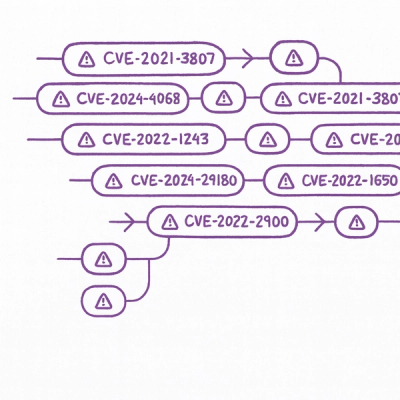
Security News
New Website “Is It Really FOSS?” Tracks Transparency in Open Source Distribution Models
A new site reviews software projects to reveal if they’re truly FOSS, making complex licensing and distribution models easy to understand.
Talius is a parser for CSS selectors. It does not parse CSS, just CSS selectors.
Talius.new accepts a single string as the selector. The Talius
object provides an interface with which to access the properties of that
selector.
In this example, the selector consists of just a, meaning it selects
<a> tags:
raw = 'a'
selector = Talius.new(raw)
rule = selector.rules[0]
rule.tags # => {"a"=>{"name"=>"a"}}
Line 1 creates the raw CSS selector like you might find in a CSS file. Line 2
creates a Talius object.
Each Talius has one or more rules. In this example the object will have one
rule. Line 3 gets that rule. Each rule has a hash of tag names in the tags
property. Line 4 displays that hash. See below for more about the tags hash.
The following sections will describe how Talius provides information about different elements of a selector. Talius is in its infancy, so there are some important aspects of CSS selectors that it doesn't support. Those aspects are detailed below.
If a selector contains a tag name, that information will be put into the
tags hash of the rule. Consider this example.
raw = 'a'
selector = Talius.new(raw)
rule = selector.rules[0]
rule.tags # => {"a"=>{"name"=>"a"}}
rule.tags['a'].class # => Talius::Node::Tag
rule.tags['a'].name # => "a"
rule.tags['a'].namespace # => nil
That selector consists of just a single tag name, so the selector object has
just one rule. That rule has a property called tags, which is a hash of the
tags in the rule. The key for each hash element is the name of the tag. The
value of the element is a Talius::Node::Tag object. That object has two
properties, name and namespace.
To indicate the namespace for the tag, put the namespace, followed by |,
followed by the name of the tag. For example, the following code has a selector
for tags in the mml namespace with the name a. The keys in the tags hash
are formatted in the same way.
raw = 'mml|a'
selector = Talius.new(raw)
rule = selector.rules[0]
rule.tags # => {"mml|a"=>{"name"=>"a", "namespace"=>"mml"}}
rule.tags['mml|a'].class # => Talius::Node::Tag
rule.tags['mml|a'].name # => "a"
rule.tags['mml|a'].namespace # => "mml"
For multiple rules for a selector, separate the rules with a comma. For example,
the following code parses a selector with two rules, one for the section tag
and one for the div tag.
raw = 'section, div'
selector = Talius.new(raw)
selector.rules.length # => 2
selector.rules # => [{"tags"=>{"section"=>{"name"=>"section"}}}, {"tags"=>{"div"=>{"name"=>"div"}}}]
If any ID descriptions are given, those IDs can be found in the rule's ids
hash. The keys are the names of the IDs, the values are always true.
raw = '#overview'
selector = Talius.new(raw)
rule = selector.rules[0]
rule.ids # => {"overview"=>true}
Classes are available in the classes property of the rule. classes is a
simple hash in which the value of each class is true.
raw = 'section.overview.current'
selector = Talius.new(raw)
rule = selector.rules[0]
rule.classes # => {"overview"=>true, "current"=>true}
Attribute rules are provided in the rule's atts hash. The hash consists of the
key of each attribute and a Talius::Node::Att object.
In this simple example, the selector looks for tags with an rel attribute.
raw = '[rel]'
selector = Talius.new(raw)
rule = selector.rules[0]
att = rule.atts['rel']
att.class # => Talius::Node::Att
att.name # => rel
If you assign a value to the attribute, that value will be in value property.
raw = '[rel=license]'
selector = Talius.new(raw)
rule = selector.rules[0]
att = rule.atts['rel']
att.name # => href
att.value # => license
Attribute namespaces are indicated in the same way as with tags. You can access
the namespace with the namespace property.
raw = '[mml|rel]'
selector = Talius.new(raw)
rule = selector.rules[0]
att = rule.atts['mml|rel']
att.name # => rel
att.namespace # => mml
There are a few aspects of CSS selectors that have not yet been implemented.
:not() pseudo-class is not understood.gem install talius
Mike O'Sullivan mike@idocs.com
"Talius" doesn't mean anything in particular. It just sounded like a good name and it was available on rubygems.rb.
| version | date | notes |
|---|---|---|
| 0.5 | May 29, 2020 | Initial upload. |
FAQs
Unknown package
We found that talius demonstrated a not healthy version release cadence and project activity because the last version was released a year ago. It has 1 open source maintainer collaborating on the project.
Did you know?

Socket for GitHub automatically highlights issues in each pull request and monitors the health of all your open source dependencies. Discover the contents of your packages and block harmful activity before you install or update your dependencies.

Security News
A new site reviews software projects to reveal if they’re truly FOSS, making complex licensing and distribution models easy to understand.

Security News
Astral unveils pyx, a Python-native package registry in beta, designed to speed installs, enhance security, and integrate deeply with uv.

Security News
The Latio podcast explores how static and runtime reachability help teams prioritize exploitable vulnerabilities and streamline AppSec workflows.